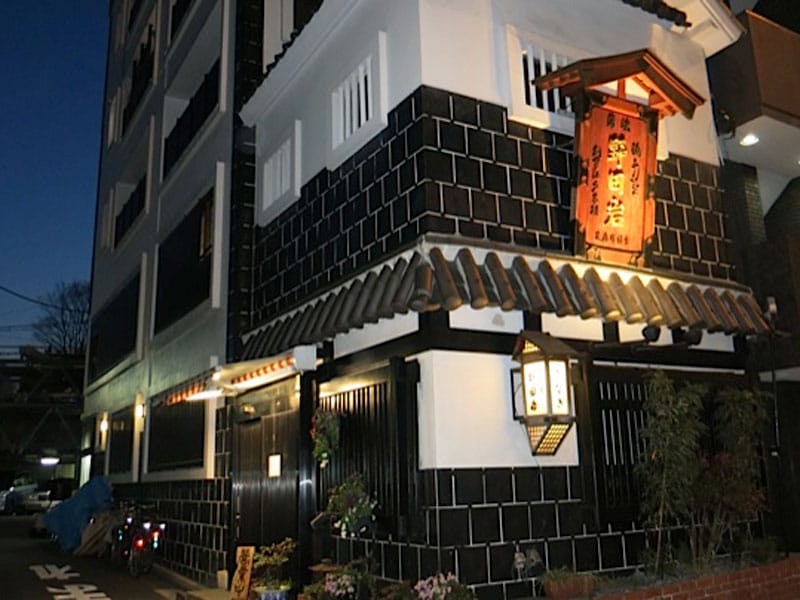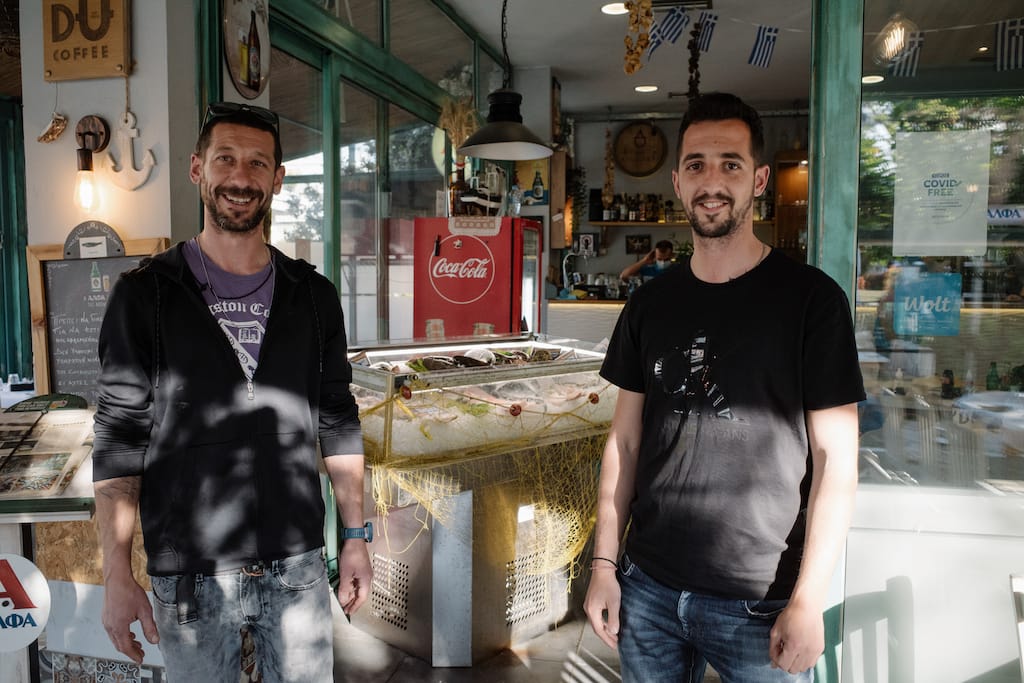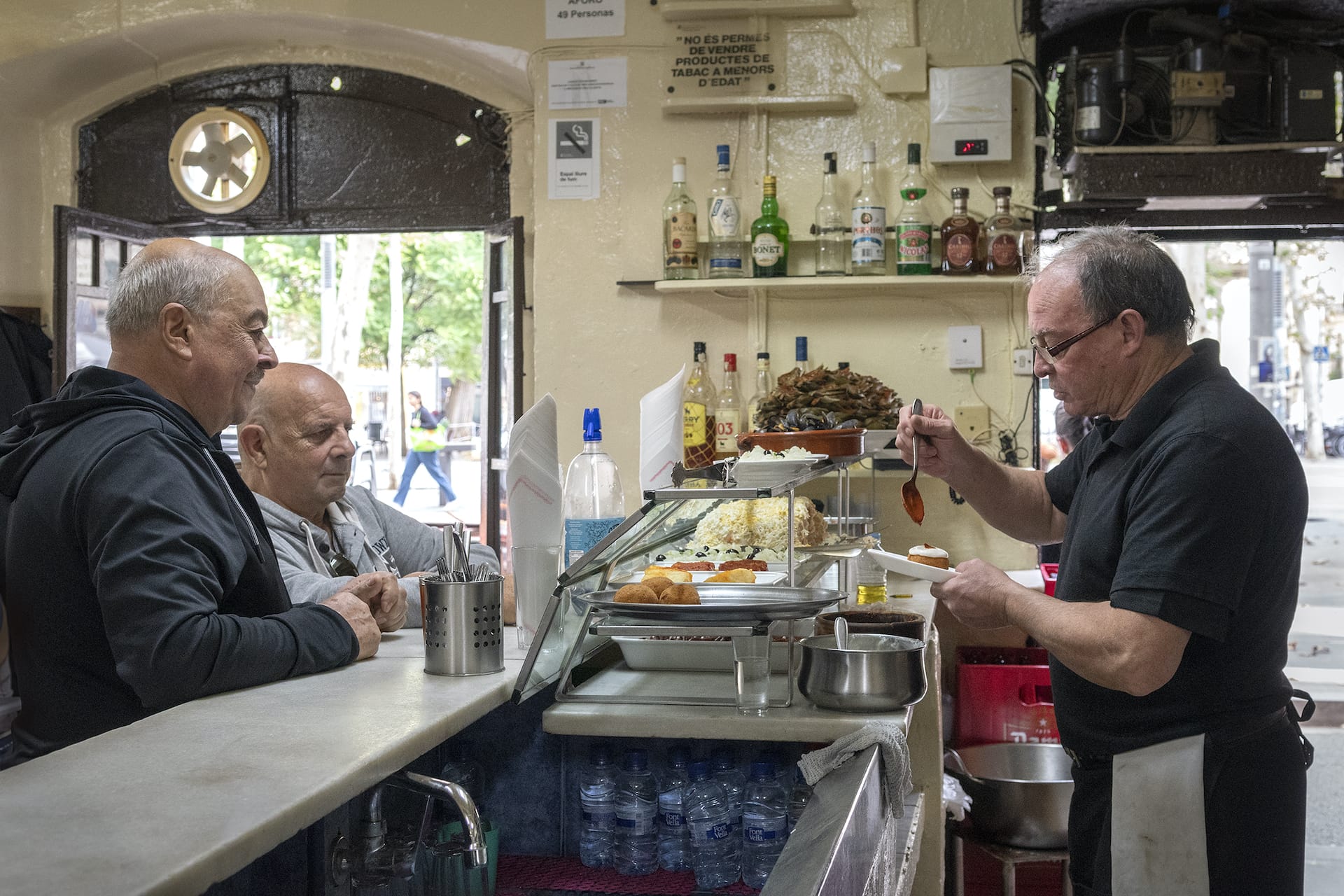The thought of eating eel can be off-putting, yet the super-fragrant, umami-tasting, velvety-textured delicacy is one of Japan’s prized foods. A best bet for dining like a true Tokyoite is to include an unagi (freshwater eel) meal at one of Tokyo’s top unagi restaurants serving only the one delicacy. The first Japanese character in the Japanese word for unagi (う) resembles the meter-long fish, and most unagi places enthusiastically employ imaginative ways to display their specialty on signs outside the restaurant. The fish can be expensive, depending on quality, and is highly prized for its preparation, taste and nutrition, being high in Vitamin A, B-complex, protein and calcium.
The current unagi boom in Japan does not seem likely to subside in the near future, and the reality is that the supply of high-quality eel is seriously threatened. Many places serve farmed unagi or fish imported from Taiwan or China. Nodaiwa, in the Higashi Azabu area of Tokyo, is known for serving only fresh, wild Japan-caught fish, traditionally cooked and presented.
Unagi preparation developed around the 17th century, and it is a typical Edo (Tokyo) dish. An experienced unagi chef has spent three years learning how to skewer the eels on sticks for grilling, then eight more years mastering the skill of splitting the fish for the sticks, working his/her way up to the cooking level. Perfecting the grilling of unagi takes a lifetime. In Tokyo the eels are split from the stomach side for cleaning and then steamed before being grilled over charcoal. The cooked fish is soft and melty. In the southern and western parts of Japan, the eels are split from the back and never steamed, just grilled, giving them a chewy, oilier flavor.

At Nodaiwa the chefs manage to coax out a perfect blend of softness and oil in the fish. The restaurant is housed in a building brought from Hida-Takayama in Gifu prefecture, which is famous for Gassho Zukuri farmhouse architecture, with its massive dark wooden beams and thatched roofs. The structure was dismantled and then hauled down to Tokyo piece by piece and reassembled in the modern building where Nodaiwa offers a small glimpse of traditional taste and skill, with vintage touches throughout. The restaurant has been in operation for almost 200 years and exudes history.
From sometime around the second half of April until about the second half of November, the eel served is completely natural, caught in the Ariake Sea, Shinji or Okayama. During the deep winter months, the eel is aquaculture fish from Shizuoka-Kagoshima, yet still natural.
There is a small dining room with six tables at Nodaiwa on the main floor and private rooms on the second. A kimono-clad woman greets guests at the door and serenely guides them to an available table. During peak hours diners may wait in a small vestibule. The food takes time, being perhaps the ultimate “slow food.” The unagi is cleaned, skewered and then slowly grilled over a charcoal fire using Japanese wood. Nothing is rushed. Everything is freshly prepared. Diners sit hungrily, waiting for their prize.
The wait while grilling is the perfect excuse to drink beer or wine and try a few small dishes usually served as appetizers with unagi. Umaki, grilled eel wrapped in egg, or usaku, grilled eel in a vinegar sauce, are the perfect accompaniment to either hot or cold sake, or a selection from the limited French wine list at Nodaiwa. There is a trio of small unagi appetizers that makes an excellent starter.
Waiting makes the meal even tastier. Serious unagi aficionados often insist on a short course with a small amount of shirayaki, non-seasoned plainly grilled eel, eaten with a splash of soy sauce and a dab of wasabi to taste. At Nodaiwa, it’s a specialty of the house. The real star, however, is steamed then grilled unagi lavished with a finishing sauce, gleaming and sequestered in a covered lacquer box or ceramic bowl. Lifting the lid creates a whiff of fish, charcoal and a final anticipation of the treat to come. Reach for a small pot holding sansho, an aromatic ground peppercorn, and sparingly sprinkle it over the fish. Then dig in.
Nodaiwa’s unagi is full-flavored and bold. The fish is served over perfectly cooked rice. Scoop both together with chopsticks and feel the combination of textures in the mouth. Let the aroma tickle your sinuses. The Japanese pickles (daikon, cucumber and cabbage) balance the umami between bites. An unagi meal is not complete without kimosui, clear soup with unagi liver, consumed during the meal or afterwards.
There are set meals, or unagi teishoku, offered at Nodaiwa. They are well-priced and a good way to experience the full meal. Ordering à la carte unagi offers a way to decide just how much of the fish to eat. There are many lacquer box sizes to choose from. Small desserts, usually fruit, finish the set meals.
While the food can feel exotic, there is, happily, an English menu. The chefs at Nodaiwa are traditionally trained and usually family members. The current master chef has opened an outpost in Paris, tempting the French to indulge in the true flavors of Japan. Most likely because of the French connection, the restaurant has recently been awarded a Michelin star. Don’t be fooled – it’s where any self-respecting Edoko (resident of Tokyo) would be thrilled to go for dinner.
 May 21, 2024 O Foititis
May 21, 2024 O Foititis
Neo Psychiko, a suburb north of central Athens, is just a 15-minute drive from the […] Posted in Athens May 16, 2024 La Cova Fumada
May 16, 2024 La Cova Fumada
Opened in 1944, La Cova Fumada (“The Smoked Cave”) is one of the most beloved […] Posted in Barcelona December 11, 2023 Paule et Kopa
December 11, 2023 Paule et Kopa
Though Paris is littered with brasseries boasting classic French cuisine, Marseille […] Posted in Marseille
Published on April 16, 2015
Related stories
May 21, 2024
AthensNeo Psychiko, a suburb north of central Athens, is just a 15-minute drive from the city’s busy Syntagma central square yet feels like a world away. Residential and family-oriented, the area is greener and quieter than downtown. At its heart is Plateia Eleftherias (“Freedom Square”), a lively spot with a playground, a kiosk, cafes and…
May 16, 2024
BarcelonaOpened in 1944, La Cova Fumada (“The Smoked Cave”) is one of the most beloved gastronomic icons in Barcelona’s port area. Every day, people from all over the city come here to enjoy the powerful charms of the smell of fried fish, the spicy bite of their original “potato bombs” and the warmth of the…
December 11, 2023
MarseilleThough Paris is littered with brasseries boasting classic French cuisine, Marseille lacks restaurants that solely specialize in our traditional fare – a mix of Provençal garlic, tomatoes and olive oil, and the freshly caught delights of the Mediterranean. When we lamented this at a dinner party the other night, a woman chimed in, “What about…


















































































